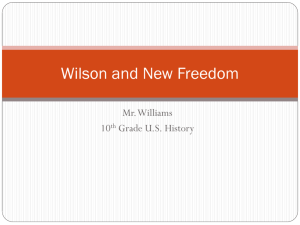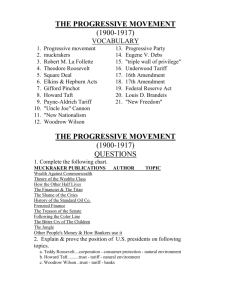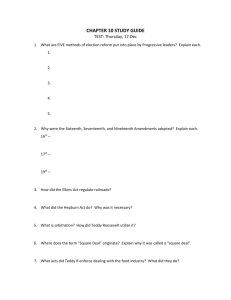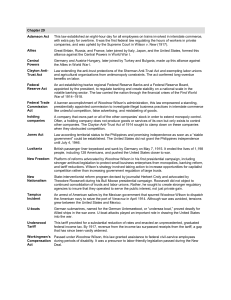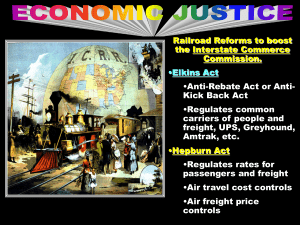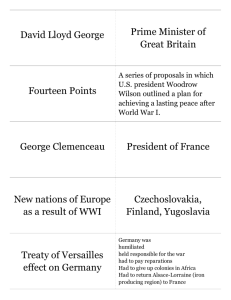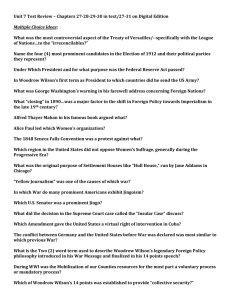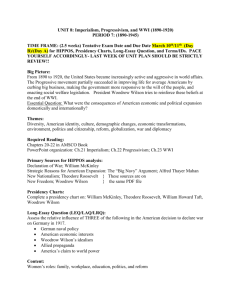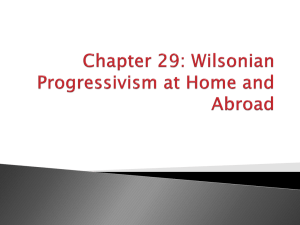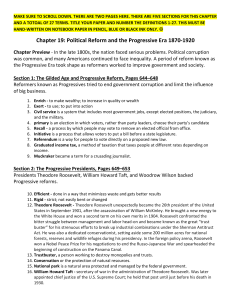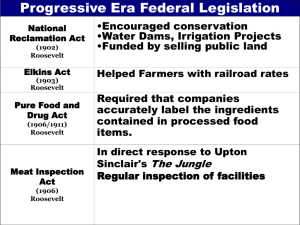Wilson and New Freedom
advertisement
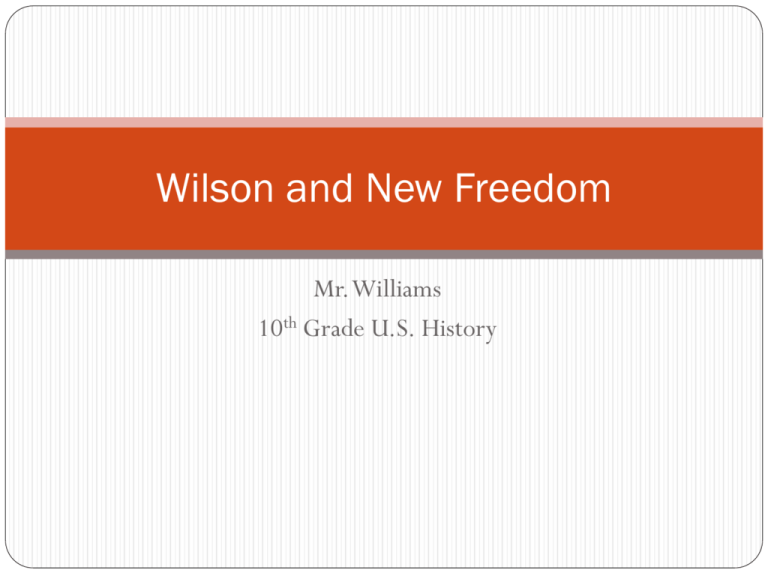
Wilson and New Freedom Mr. Williams 10th Grade U.S. History Election of 1912 Roosevelt: New Nationalism Laws to protect workers, ensure public health, and regulate business Joins the Progressive “Bull Moose” Party Increase in the power of federal government Decrease in the Power of the courts Active role as President Wilson: New Freedom Anti-trust legislation to get rid of big corporations Give small businesses and famers better opportunities in the marketplace Split in the Republican vote between Roosevelt and Taft Democrat Woodrow Wilson received 435 electoral votes Roosevelt-88, Taft-8 Woodrow Wilson Fought political machines Approved a law permitting direct primaries Enacted a program to compensate injured workers Tariff Reduction Underwood Tariff Act: Lowest levels for the tariff in more than 50 years Also called for an income tax based on income levels 16th Amendment Provided a modest graduated income tax Granted Congress the power to levy taxes based on an individual’s income to pay for government programs more fairly Banking Reform Federal Reserve Act 1913 Created a central fund from which banks could borrow to prevent collapse during financial crisis 12 Regional Banks, privately controlled but regulated and supervised by Federal Reserve Board and the President Provided larger government control over banking than ever before Anti Trust Legislation Clayton Antitrust Act 1914 Prohibited companies from buying the stock of competing companies in order to form a monopoly Strikes, boycotts, peaceful picketing st are made legal at the end of 1 Term helped to establish 8 hour work day for Railroad Workers Federal Trade Commission Created in 1913 Investigatory powers and authority to prosecute corporations for “unfair trade practices” Compare and Contrast Roosevelt and Wilson. How did each carry out the reforms of the Progressive Era? 3.8 Format
